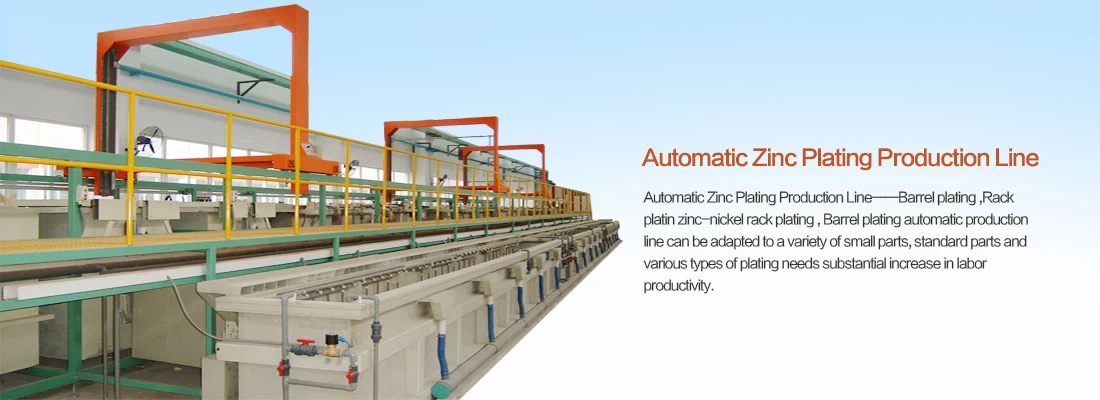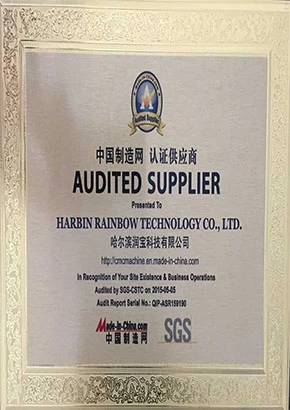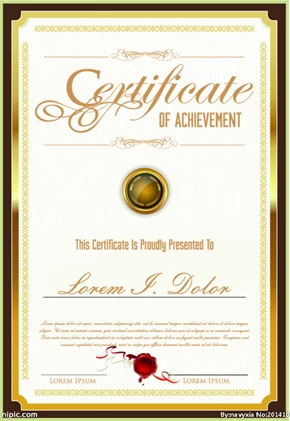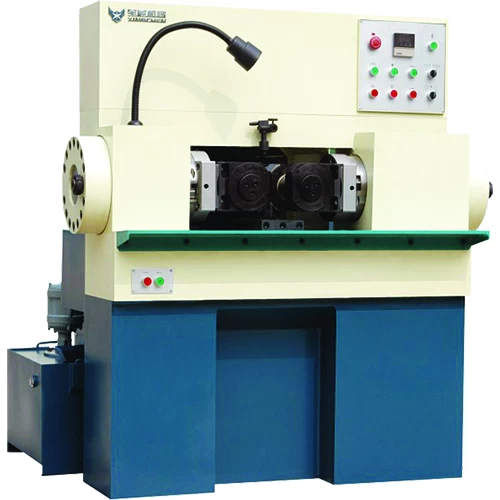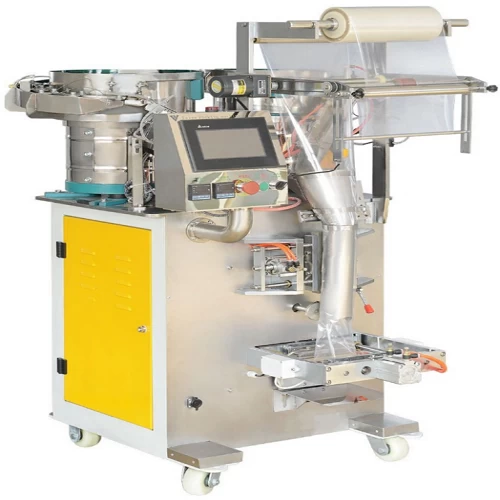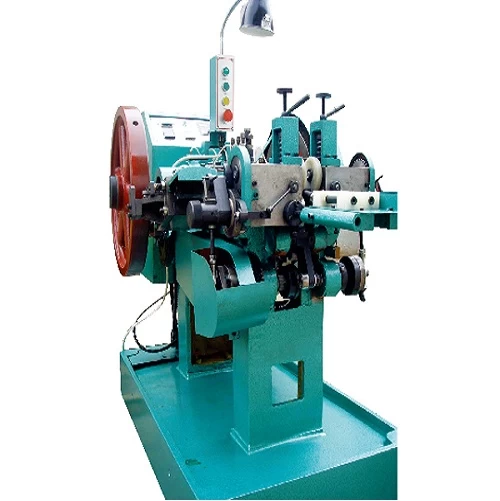Process explanation: the whole process of bolt production and processing
Gary Young
baidu
2023-10-16 10:08:38
Bolts are indispensable in daily life and industrial manufacturing. Bolts have important tasks in industry, and as long as there is industry, the function of bolts is always important.
Bolting process: material selection - spheroidization (softening) annealing - shelling and descaling - cold drawing - cold forging forming - threading - heat treatment.
1. Common materials for bolt processing
Different materials are used according to the strength level of the bolt: the standard parts on the market are mainly carbon steel, stainless steel and copper.
▌Carbon steel
We distinguish between low-carbon steel, medium-carbon and high-carbon steel, and alloy steels by the carbon content of carbon steel.
A. Low carbon steel C%≤ 0.25% is commonly known as A3 steel in China. Foreign countries are basically called 1008, 1015, 1018, 1022, etc. It is mainly used for products without hardness requirements such as 4.8 grade bolts and 4 grade nuts and small screws. (Note: Drill tail nails are mainly made of 1022 material);
B. Medium carbon steel 0.25%;
C. High carbon steel C%> 0.45%. It is basically not used in the market at present;
D. Alloy steel: add alloying elements to the carbon steel to increase some special properties of steel: such as 35, 40 chromium molybdenum, SCM435, 10B38. Fangsheng screws mainly use SCM435 chromium-molybdenum alloy steel, and the main components are C, Si, Mn, P, S, Cr, Mo.
▌Stainless steel
Performance Class:
A、45,50,60,70,80 The main austenite (18% Cr, 8% Ni) has good heat resistance, good corrosion resistance and good weldability;
B, A1, A2, A4 martensitic 13% Cr poor corrosion resistance, high strength, good wear resistance;
C, C1, C2, C4 ferritic stainless steel. 18% Cr upsetting is better, corrosion resistance is stronger than martensite;
D. At present, the imported materials on the market are mainly Japanese products. According to the level, it is mainly divided into SUS302, SUS304, SUS316.
▌Copper
Common materials are brass, zinc-copper alloy. H62, H65, H68 copper is mainly used as standard parts in the market.
2. Spheroidization (softening) annealing
◆1. Spheroidized (softening) annealed countersunk screws, hexagonal cylindrical head bolts are produced by cold heading process, the original structure of the steel will directly affect the forming ability during cold heading processing.
◆2. The plastic deformation of local areas in the cold heading process can reach 60%-80%, so the steel must have good plasticity. When the chemical composition of steel is certain, metallographic structure is the key factor that determines plasticity, it is generally believed that coarse sheet pearlite is not conducive to cold heading forming, and fine spherical pearlite can significantly improve the ability of plastic deformation of steel.
◆3. For medium carbon steel and medium carbon alloy steel with more high-strength fasteners, spheroidization (softening) annealing is carried out before cold heading in order to obtain uniform and fine spheroidized pearlite to better meet the actual production needs.
◆4. For the softening annealing of medium carbon steel wire rod, the heating temperature is mostly selected to keep heat above and below the critical point of the steel, and the heating temperature is generally not too high, otherwise three cementites will precipitate along the grain boundary, causing cold heading cracking.
◆5. The wire rod of medium carbon alloy steel adopts isothermal spheroidization annealing, after heating AC1+ (20-30%), the furnace is cooled to slightly lower than Ar1, the temperature is about 700 degrees Celsius isothermal for a period of time, and then the furnace is cooled to about 500 degrees Celsius and the furnace is air-cooled. The metallographic structure of steel changes from coarse to thin, from sheet to spherical, and the cracking rate of cold heading will be greatly reduced. The general area of 3545ML35SWRCH35K steel softening annealing temperature is 715-735 degrees Celsius.
Image
3. Peel the shell and remove the scales
The process of peeling and scaling, cold heading steel wire strip to remove iron oxide plate is stripping brightening, descaling, and there are two methods of mechanical descaling and chemical pickling.
◆1. The chemical pickling process of replacing the wire rod with mechanical descaling not only improves productivity, but also reduces environmental pollution. This descaling process includes bending method (commonly use round wheel with triangular grooves repeatedly bending wire rods), spray nine method, etc., the scale removal effect is better, but can not make the residual iron scale clean (iron oxide scale clearance rate of 97%), especially when the iron oxide scale adhesion is very strong, therefore, mechanical descaling is affected by the thickness, structure and stress state of the iron sheet, used in low-strength fasteners (less than or equal to 6.8 grade) carbon steel wire rod.
◆2. High-strength fasteners (greater than or equal to 8.8 grade) are mechanically descaled with wire rods, in order to remove all iron oxide scales, and then through the chemical pickling process, that is, composite descaling. For low carbon steel wire rods, the iron sheet left by mechanical descaling is easy to cause uneven wear of the particle draft. When the particle draft hole adheres to the iron sheet due to the friction of the wire wire of the wire rod, so that the surface of the wire wire produces longitudinal grain marks, the wire wire cold heading flange bolt or cylindrical head screw, the cause of microcracks in the head, more than 95% of the scratches on the surface of the wire are caused by scratches in the drawing process. Therefore, mechanical descaling is not suitable for high-speed pulling.
4. Cold drawing
◆1. The cold drawing process has two purposes:
First, the size of the modified raw materials;
The second is to obtain basic mechanical properties of fasteners through deformation strengthening, for medium carbon steel, medium carbon alloy steel also has a purpose, that is, to make the sheet cementite obtained after the cooling of the wire rod break as much as possible during the drawing process, and prepare for the subsequent spheroidization (softening) annealing to obtain granular cementite However, some manufacturers in order to reduce costs, arbitrarily reduce the drawing pass, excessive surface reduction rate increases the work hardening tendency of the wire wire, which directly affects the cold heading performance of the wire rod wire.
◆2. If the distribution of the surface reduction rate of each pass is not suitable, it will also cause torsional cracks in the wire drawing process, which is distributed longitudinally along the steel wire, and the cracks with a certain cycle are exposed in the process of cold heading of the steel wire.
In addition, if the lubrication is not good during the drawing process, it can also cause the cold drawn wire to appear cross-cracks regularly.
◆3. The tangent direction of the wire outlet of the wire rod is rolled up at the same time as the wire drawing die, which will cause the wear of the single-sided hole pattern of the wire drawing die to intensify, make the inner hole deround, cause the drawing deformation of the circumferential direction of the steel wire to be uneven, make the roundness of the steel wire out of the difference, and the stress of the cross-sectional section of the steel wire is uneven in the cold heading process and affect the cold heading qualification rate.
◆4. In the process of wire drawing of wire rods, the surface reduction rate of too large part of the wire deteriorates, and the surface reduction rate is not conducive to the crushing of sheet cementite, it is difficult to obtain as much granular cementite as possible, that is, the nodularity rate of cementite is low, which is extremely unfavorable to the cold heading performance of the steel wire, and the bar stock and wire wire produced by drawing method, the partial surface reduction rate is directly controlled in the range of 10%-15%.
5. Cold forging
Cold forging forming usually bolt head forming using cold heading plastic processing, compared with cutting processing, metal fiber (metal retention line) along the shape of the product is continuous, there is no cutting in the middle, thus improving the strength of the product, especially excellent mechanical properties. The cold heading forming process includes cutting and forming, single station click, double-click cold heading and multi-station automatic cold heading .
◆1. Cut the blank with a semi-closed cutting tool, the easiest way is to use a sleeve cutting tool;
The angle of the incision should not be greater than 3 degrees;
When using an open cutting tool, the incision angle can reach 5-7 degrees.
◆2. The short-size blank should be able to flip 180 degrees during the transfer process from the previous station to the next forming station, so as to give full play to the potential of the automatic cold heading machine, process fasteners with complex structures, and improve the accuracy of parts.
◆3. The punch return device should be installed on each forming station, and the die should be equipped with a sleeve type jacking device.
◆4. The number of forming stations (excluding cutting stations) should generally reach 3-4 stations (more than 5 under special circumstances).
◆5. During the effective use period, the structure of the main slide guide rail and the process parts can ensure the positioning accuracy of the punch and die.
◆6. The terminal limit switch must be installed on the baffle that controls the material selection, and attention must be paid to the control of upsetting force. The roundness of the cold dial strip wire used in the manufacture of high-strength fasteners on the automatic cold heading machine should be within the diameter tolerance, and the more precise fasteners, the roundness of the wire should be limited to 1/2 diameter tolerance, if the diameter of the wire does not reach the specified size, the part of the upsetting part or the head will appear cracks, or the formation of burrs, if the diameter is less than the size required by the process, the head will be incomplete, the angular or thick part is not clear.
◆7. The accuracy that cold heading molding can achieve is also related to the choice of molding method and the process used. In addition, it also depends on the structural characteristics of the equipment used, the process characteristics and its state, the tool accuracy, life and the degree of wear. The high-alloy steel used in cold heading forming and extrusion, the working surface roughness of the cemented carbide mold should not be large Ra=0.2um, and the roughness of the working surface of such molds reaches Ra=0.025-0.050um, which has the highest life.
6. Thread processing
◆1. The bolt thread generally adopts cold working, so that the thread blank within a certain diameter range is formed by the thread plate (die) through the rolling (rolling) plate (die). The plastic streamline of the threaded part can be obtained without being cut off, and the strength is increased, and the product with high precision and uniform quality is widely used.
◆2. In order to make the thread outer diameter of the final product, the required thread blank diameter is different, because it is limited by factors such as thread accuracy and whether the material has plating.
◆3. Rolling (rubbing) pressing thread refers to the processing method of using plastic deformation to form threaded teeth. It is a rolling (thread washer) mold with the same pitch and tooth shape as the thread being processed, while extruding the cylindrical screw, the screw is rotated, and finally the tooth shape on the rolling mold is transferred to the screw to form the thread.
◆4. The common point of rolling (rubbing) pressing thread processing is that the number of rolling revolutions does not have to be too much, if it is too much, the efficiency is low, and the surface of the thread tooth is easy to produce separation phenomenon or random buckle phenomenon. Conversely, if the number of revolutions is too small, the thread diameter is easy to lose roundness, and the pressure at the beginning of rolling is abnormally high, resulting in a shortened mold life.
◆5. Common defects of rolling threads: cracks or scratches on the surface of the thread part; indiscriminate buckles; The thread part is not rounded. If these defects occur in large quantities, they are discovered during the processing phase. If the number of occurrences is small, the production process does not notice these defects and will flow to the user, causing trouble. Therefore, the key issues of processing conditions should be summarized and these key factors should be controlled in the production process.
Image
7. Heat treatment
1) Heat treatment, high-strength fasteners, according to technical requirements, should be quenched and tempered.
2) Heat treatment and tempering is to improve the comprehensive mechanical properties of fasteners to meet the tensile strength value and yield ratio specified by the product.
3) The heat treatment process has a crucial impact on high-strength fasteners, especially its intrinsic quality, so in order to produce high-quality high-strength fasteners, it is necessary to have advanced heat treatment technology and equipment.
4) Due to the large production volume of high-strength bolts, low price, and the thread part is a relatively fine and relatively precise structure, therefore, the heat treatment equipment must have the ability of large production capacity, high degree of automation and good heat treatment quality.
5) The decarburization of the thread will cause the fastener to trip first when it does not meet the resistance required by the mechanical properties, which will make the threaded fastener fail and shorten the service life. Due to the decarburization of raw materials, if the annealing is improper, the decarburization layer of raw materials will be deepened. During the quenching and tempering heat treatment process, some oxidizing gas is generally brought in from outside the furnace.
6) The rust of the bar wire or the residue on the surface of the wire of the wire after cold drawing will also decompose after heating in the furnace, and the reaction will generate some oxidizing gas. For example, the surface rust of steel wire, which is composed of iron carbonate and hydroxide, will decompose into CO2 and H2O after heating, thereby aggravating decarburization. Studies have shown that the degree of decarburization of medium carbon alloy steel is more serious than that of carbon steel, and the fastest decarburization temperature is between 700-800 degrees Celsius.
7) Because the adhesion on the surface of the steel wire decomposes and synthesizes CO2 and H2O under certain conditions, if the continuous mesh belt furnace gas is not properly controlled, it will also cause screw decarburization and out-of-tolerance.
8) High-strength fasteners When cold heading is adopted, the raw material and annealed decarburization layer not only remains, but also is squeezed to the top of the thread, for the fastener surface that needs to be quenched, the required hardness is not obtained, and its mechanical properties (especially strength and wear resistance) are reduced. In addition, the surface of the steel wire is decarburized, and the surface layer has different expansion coefficients depending on the internal structure, and surface cracks may occur during quenching.
9) The quality problems that may occur in the process of quenching and quenching of fasteners mainly include: insufficient hardness in the quenched state; Uneven hardness in the quenched state; Quenching deformation is out of tolerance; Quenching cracking.
10) Such problems on site are often related to raw materials, quenching heating and quenching cooling, and the correct formulation of heat treatment processes and standardization of production operation processes can often avoid such quality accidents.
Bolting process: material selection - spheroidization (softening) annealing - shelling and descaling - cold drawing - cold forging forming - threading - heat treatment.
1. Common materials for bolt processing
Different materials are used according to the strength level of the bolt: the standard parts on the market are mainly carbon steel, stainless steel and copper.
▌Carbon steel
We distinguish between low-carbon steel, medium-carbon and high-carbon steel, and alloy steels by the carbon content of carbon steel.
A. Low carbon steel C%≤ 0.25% is commonly known as A3 steel in China. Foreign countries are basically called 1008, 1015, 1018, 1022, etc. It is mainly used for products without hardness requirements such as 4.8 grade bolts and 4 grade nuts and small screws. (Note: Drill tail nails are mainly made of 1022 material);
B. Medium carbon steel 0.25%;
C. High carbon steel C%> 0.45%. It is basically not used in the market at present;
D. Alloy steel: add alloying elements to the carbon steel to increase some special properties of steel: such as 35, 40 chromium molybdenum, SCM435, 10B38. Fangsheng screws mainly use SCM435 chromium-molybdenum alloy steel, and the main components are C, Si, Mn, P, S, Cr, Mo.
▌Stainless steel
Performance Class:
A、45,50,60,70,80 The main austenite (18% Cr, 8% Ni) has good heat resistance, good corrosion resistance and good weldability;
B, A1, A2, A4 martensitic 13% Cr poor corrosion resistance, high strength, good wear resistance;
C, C1, C2, C4 ferritic stainless steel. 18% Cr upsetting is better, corrosion resistance is stronger than martensite;
D. At present, the imported materials on the market are mainly Japanese products. According to the level, it is mainly divided into SUS302, SUS304, SUS316.
▌Copper
Common materials are brass, zinc-copper alloy. H62, H65, H68 copper is mainly used as standard parts in the market.
2. Spheroidization (softening) annealing
◆1. Spheroidized (softening) annealed countersunk screws, hexagonal cylindrical head bolts are produced by cold heading process, the original structure of the steel will directly affect the forming ability during cold heading processing.
◆2. The plastic deformation of local areas in the cold heading process can reach 60%-80%, so the steel must have good plasticity. When the chemical composition of steel is certain, metallographic structure is the key factor that determines plasticity, it is generally believed that coarse sheet pearlite is not conducive to cold heading forming, and fine spherical pearlite can significantly improve the ability of plastic deformation of steel.
◆3. For medium carbon steel and medium carbon alloy steel with more high-strength fasteners, spheroidization (softening) annealing is carried out before cold heading in order to obtain uniform and fine spheroidized pearlite to better meet the actual production needs.
◆4. For the softening annealing of medium carbon steel wire rod, the heating temperature is mostly selected to keep heat above and below the critical point of the steel, and the heating temperature is generally not too high, otherwise three cementites will precipitate along the grain boundary, causing cold heading cracking.
◆5. The wire rod of medium carbon alloy steel adopts isothermal spheroidization annealing, after heating AC1+ (20-30%), the furnace is cooled to slightly lower than Ar1, the temperature is about 700 degrees Celsius isothermal for a period of time, and then the furnace is cooled to about 500 degrees Celsius and the furnace is air-cooled. The metallographic structure of steel changes from coarse to thin, from sheet to spherical, and the cracking rate of cold heading will be greatly reduced. The general area of 3545ML35SWRCH35K steel softening annealing temperature is 715-735 degrees Celsius.
Image
3. Peel the shell and remove the scales
The process of peeling and scaling, cold heading steel wire strip to remove iron oxide plate is stripping brightening, descaling, and there are two methods of mechanical descaling and chemical pickling.
◆1. The chemical pickling process of replacing the wire rod with mechanical descaling not only improves productivity, but also reduces environmental pollution. This descaling process includes bending method (commonly use round wheel with triangular grooves repeatedly bending wire rods), spray nine method, etc., the scale removal effect is better, but can not make the residual iron scale clean (iron oxide scale clearance rate of 97%), especially when the iron oxide scale adhesion is very strong, therefore, mechanical descaling is affected by the thickness, structure and stress state of the iron sheet, used in low-strength fasteners (less than or equal to 6.8 grade) carbon steel wire rod.
◆2. High-strength fasteners (greater than or equal to 8.8 grade) are mechanically descaled with wire rods, in order to remove all iron oxide scales, and then through the chemical pickling process, that is, composite descaling. For low carbon steel wire rods, the iron sheet left by mechanical descaling is easy to cause uneven wear of the particle draft. When the particle draft hole adheres to the iron sheet due to the friction of the wire wire of the wire rod, so that the surface of the wire wire produces longitudinal grain marks, the wire wire cold heading flange bolt or cylindrical head screw, the cause of microcracks in the head, more than 95% of the scratches on the surface of the wire are caused by scratches in the drawing process. Therefore, mechanical descaling is not suitable for high-speed pulling.
4. Cold drawing
◆1. The cold drawing process has two purposes:
First, the size of the modified raw materials;
The second is to obtain basic mechanical properties of fasteners through deformation strengthening, for medium carbon steel, medium carbon alloy steel also has a purpose, that is, to make the sheet cementite obtained after the cooling of the wire rod break as much as possible during the drawing process, and prepare for the subsequent spheroidization (softening) annealing to obtain granular cementite However, some manufacturers in order to reduce costs, arbitrarily reduce the drawing pass, excessive surface reduction rate increases the work hardening tendency of the wire wire, which directly affects the cold heading performance of the wire rod wire.
◆2. If the distribution of the surface reduction rate of each pass is not suitable, it will also cause torsional cracks in the wire drawing process, which is distributed longitudinally along the steel wire, and the cracks with a certain cycle are exposed in the process of cold heading of the steel wire.
In addition, if the lubrication is not good during the drawing process, it can also cause the cold drawn wire to appear cross-cracks regularly.
◆3. The tangent direction of the wire outlet of the wire rod is rolled up at the same time as the wire drawing die, which will cause the wear of the single-sided hole pattern of the wire drawing die to intensify, make the inner hole deround, cause the drawing deformation of the circumferential direction of the steel wire to be uneven, make the roundness of the steel wire out of the difference, and the stress of the cross-sectional section of the steel wire is uneven in the cold heading process and affect the cold heading qualification rate.
◆4. In the process of wire drawing of wire rods, the surface reduction rate of too large part of the wire deteriorates, and the surface reduction rate is not conducive to the crushing of sheet cementite, it is difficult to obtain as much granular cementite as possible, that is, the nodularity rate of cementite is low, which is extremely unfavorable to the cold heading performance of the steel wire, and the bar stock and wire wire produced by drawing method, the partial surface reduction rate is directly controlled in the range of 10%-15%.
5. Cold forging
Cold forging forming usually bolt head forming using cold heading plastic processing, compared with cutting processing, metal fiber (metal retention line) along the shape of the product is continuous, there is no cutting in the middle, thus improving the strength of the product, especially excellent mechanical properties. The cold heading forming process includes cutting and forming, single station click, double-click cold heading and multi-station automatic cold heading .
◆1. Cut the blank with a semi-closed cutting tool, the easiest way is to use a sleeve cutting tool;
The angle of the incision should not be greater than 3 degrees;
When using an open cutting tool, the incision angle can reach 5-7 degrees.
◆2. The short-size blank should be able to flip 180 degrees during the transfer process from the previous station to the next forming station, so as to give full play to the potential of the automatic cold heading machine, process fasteners with complex structures, and improve the accuracy of parts.
◆3. The punch return device should be installed on each forming station, and the die should be equipped with a sleeve type jacking device.
◆4. The number of forming stations (excluding cutting stations) should generally reach 3-4 stations (more than 5 under special circumstances).
◆5. During the effective use period, the structure of the main slide guide rail and the process parts can ensure the positioning accuracy of the punch and die.
◆6. The terminal limit switch must be installed on the baffle that controls the material selection, and attention must be paid to the control of upsetting force. The roundness of the cold dial strip wire used in the manufacture of high-strength fasteners on the automatic cold heading machine should be within the diameter tolerance, and the more precise fasteners, the roundness of the wire should be limited to 1/2 diameter tolerance, if the diameter of the wire does not reach the specified size, the part of the upsetting part or the head will appear cracks, or the formation of burrs, if the diameter is less than the size required by the process, the head will be incomplete, the angular or thick part is not clear.
◆7. The accuracy that cold heading molding can achieve is also related to the choice of molding method and the process used. In addition, it also depends on the structural characteristics of the equipment used, the process characteristics and its state, the tool accuracy, life and the degree of wear. The high-alloy steel used in cold heading forming and extrusion, the working surface roughness of the cemented carbide mold should not be large Ra=0.2um, and the roughness of the working surface of such molds reaches Ra=0.025-0.050um, which has the highest life.
6. Thread processing
◆1. The bolt thread generally adopts cold working, so that the thread blank within a certain diameter range is formed by the thread plate (die) through the rolling (rolling) plate (die). The plastic streamline of the threaded part can be obtained without being cut off, and the strength is increased, and the product with high precision and uniform quality is widely used.
◆2. In order to make the thread outer diameter of the final product, the required thread blank diameter is different, because it is limited by factors such as thread accuracy and whether the material has plating.
◆3. Rolling (rubbing) pressing thread refers to the processing method of using plastic deformation to form threaded teeth. It is a rolling (thread washer) mold with the same pitch and tooth shape as the thread being processed, while extruding the cylindrical screw, the screw is rotated, and finally the tooth shape on the rolling mold is transferred to the screw to form the thread.
◆4. The common point of rolling (rubbing) pressing thread processing is that the number of rolling revolutions does not have to be too much, if it is too much, the efficiency is low, and the surface of the thread tooth is easy to produce separation phenomenon or random buckle phenomenon. Conversely, if the number of revolutions is too small, the thread diameter is easy to lose roundness, and the pressure at the beginning of rolling is abnormally high, resulting in a shortened mold life.
◆5. Common defects of rolling threads: cracks or scratches on the surface of the thread part; indiscriminate buckles; The thread part is not rounded. If these defects occur in large quantities, they are discovered during the processing phase. If the number of occurrences is small, the production process does not notice these defects and will flow to the user, causing trouble. Therefore, the key issues of processing conditions should be summarized and these key factors should be controlled in the production process.
Image
7. Heat treatment
1) Heat treatment, high-strength fasteners, according to technical requirements, should be quenched and tempered.
2) Heat treatment and tempering is to improve the comprehensive mechanical properties of fasteners to meet the tensile strength value and yield ratio specified by the product.
3) The heat treatment process has a crucial impact on high-strength fasteners, especially its intrinsic quality, so in order to produce high-quality high-strength fasteners, it is necessary to have advanced heat treatment technology and equipment.
4) Due to the large production volume of high-strength bolts, low price, and the thread part is a relatively fine and relatively precise structure, therefore, the heat treatment equipment must have the ability of large production capacity, high degree of automation and good heat treatment quality.
5) The decarburization of the thread will cause the fastener to trip first when it does not meet the resistance required by the mechanical properties, which will make the threaded fastener fail and shorten the service life. Due to the decarburization of raw materials, if the annealing is improper, the decarburization layer of raw materials will be deepened. During the quenching and tempering heat treatment process, some oxidizing gas is generally brought in from outside the furnace.
6) The rust of the bar wire or the residue on the surface of the wire of the wire after cold drawing will also decompose after heating in the furnace, and the reaction will generate some oxidizing gas. For example, the surface rust of steel wire, which is composed of iron carbonate and hydroxide, will decompose into CO2 and H2O after heating, thereby aggravating decarburization. Studies have shown that the degree of decarburization of medium carbon alloy steel is more serious than that of carbon steel, and the fastest decarburization temperature is between 700-800 degrees Celsius.
7) Because the adhesion on the surface of the steel wire decomposes and synthesizes CO2 and H2O under certain conditions, if the continuous mesh belt furnace gas is not properly controlled, it will also cause screw decarburization and out-of-tolerance.
8) High-strength fasteners When cold heading is adopted, the raw material and annealed decarburization layer not only remains, but also is squeezed to the top of the thread, for the fastener surface that needs to be quenched, the required hardness is not obtained, and its mechanical properties (especially strength and wear resistance) are reduced. In addition, the surface of the steel wire is decarburized, and the surface layer has different expansion coefficients depending on the internal structure, and surface cracks may occur during quenching.
9) The quality problems that may occur in the process of quenching and quenching of fasteners mainly include: insufficient hardness in the quenched state; Uneven hardness in the quenched state; Quenching deformation is out of tolerance; Quenching cracking.
10) Such problems on site are often related to raw materials, quenching heating and quenching cooling, and the correct formulation of heat treatment processes and standardization of production operation processes can often avoid such quality accidents.



